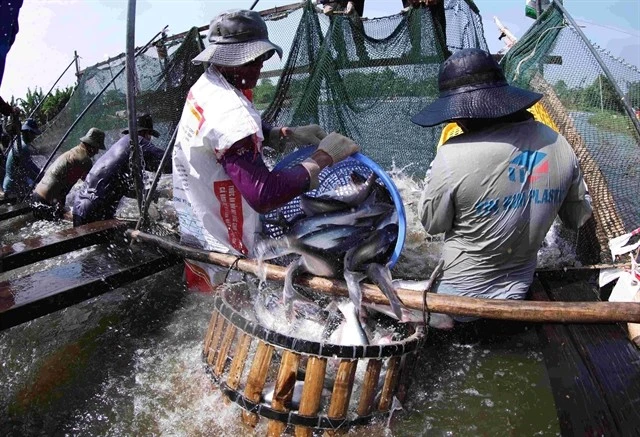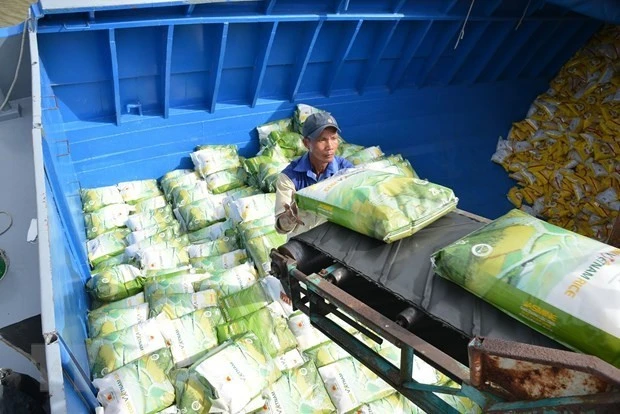According to the National Office of Intellectual Property, under the Ministry of Science and Technology, Vietnam has protected 120 geographical indications, including 108 geographical indications of Vietnam and 12 geographical indications of other countries. Several of Vietnam’s geographical indications are protected abroad, including the “Phu Quoc” fish sauce geographical indication protected in the EU, the “Binh Thuan” dragon fruit geographical indication is protected in Japan, and the “Luc Ngan” lychee geographical indication is also protected in Japan, among others.
Binh Thuan is known as one of the regions with the largest growing area of dragon fruit, with an area of nearly 30,000 ha. This agricultural production is mainly exported to the Chinese market (accounting for 95%). Most recently, Binh Thuan dragon fruit has been officially protected in Japan, one of the most demanding markets in the world. The trademark “Binh Thuan Dragon Fruit” has been protected in 14 countries and territories, such as the US, the UK, Germany, and the Republic of Korea.
Chairman of the Binh Thuan Dragon Fruit Association Vo Huy Hoang said, that protected geographical indications play an important role in the development of dragon fruit, which is considered the “key” to promoting the consumption of the fruit, not only in the domestic market but also in world markets.
Director of the International Trademark and Geographical Indication Examination Centre under the National Office of Intellectual Property Ngo Viet Thang said that enterprises, cooperatives and individuals need to be responsible for complying with regulations so that products circulating on the market have quality and prestige in the eyes of consumers.
Deputy Director of the Binh Thuan Department of Science and Technology Mai Thanh Nga said, that the building and development of geographical indications have become a strategy to preserve biodiversity and traditional culture, as well as enhance commercial competition, helping to promote local potential and resources. It also helps promote the fight against abuse and commercial fraud, raise consumer awareness, and increase the competitiveness of products, contributing to improving product value and increasing profit value.
Therefore, in recent years, the province has regularly guided businesses to carry out procedures to use the “Binh Thuan” geographical indication for dragon fruit and the “Phan Thiet” geographical indication for fish sauce products. The quality control of products bearing geographical indications and control of businesses’ compliance with the conditions of using geographical indications have also been implemented by localities, in combination with other tasks such as granting VietGAP certificates, domestic quarantine and food safety control, and others.
Scientists from the Vietnam Academy of Social Sciences have come up with specific solutions for Binh Thuan Province to maintain and promote the effectiveness of dragon fruit geographical indication in Japan, for the future.
It is necessary to improve farming methods, to create products that meet the standards as protected and to create increasingly better products to affirm its reputation. At the same time, it is advisable to strengthen the performance of the Binh Thuan Dragon Fruit Production and Consumption Association, so that the agency can manage the issuance of planting area codes, farming methods, and financial resources while promoting products to a large number of customers, especially foreign and Japanese markets.
In addition, local associations suggested that the banking sector have flexible solutions, to support credit and finance, reduce lending interest rates, and grant new credit in 2023, to help enterprises and cooperatives resume and foster production and business activities, in the coming years.



![[Video] Seven inspection teams formed to stabilise market during peak Tet period](https://en-cdn.nhandan.vn/images/9f233ae74386156ace55673ec5a8ea373e7bb5df2274800bfd51bda6ec86d9464d289201deda54c246314a974e2f0aef0bc69929884e4c53fd4eb6a1f98b468f6ae70becd9f49b834a8b9195e077c25b/anhminhhoavideo-110126-2.jpg.webp)












